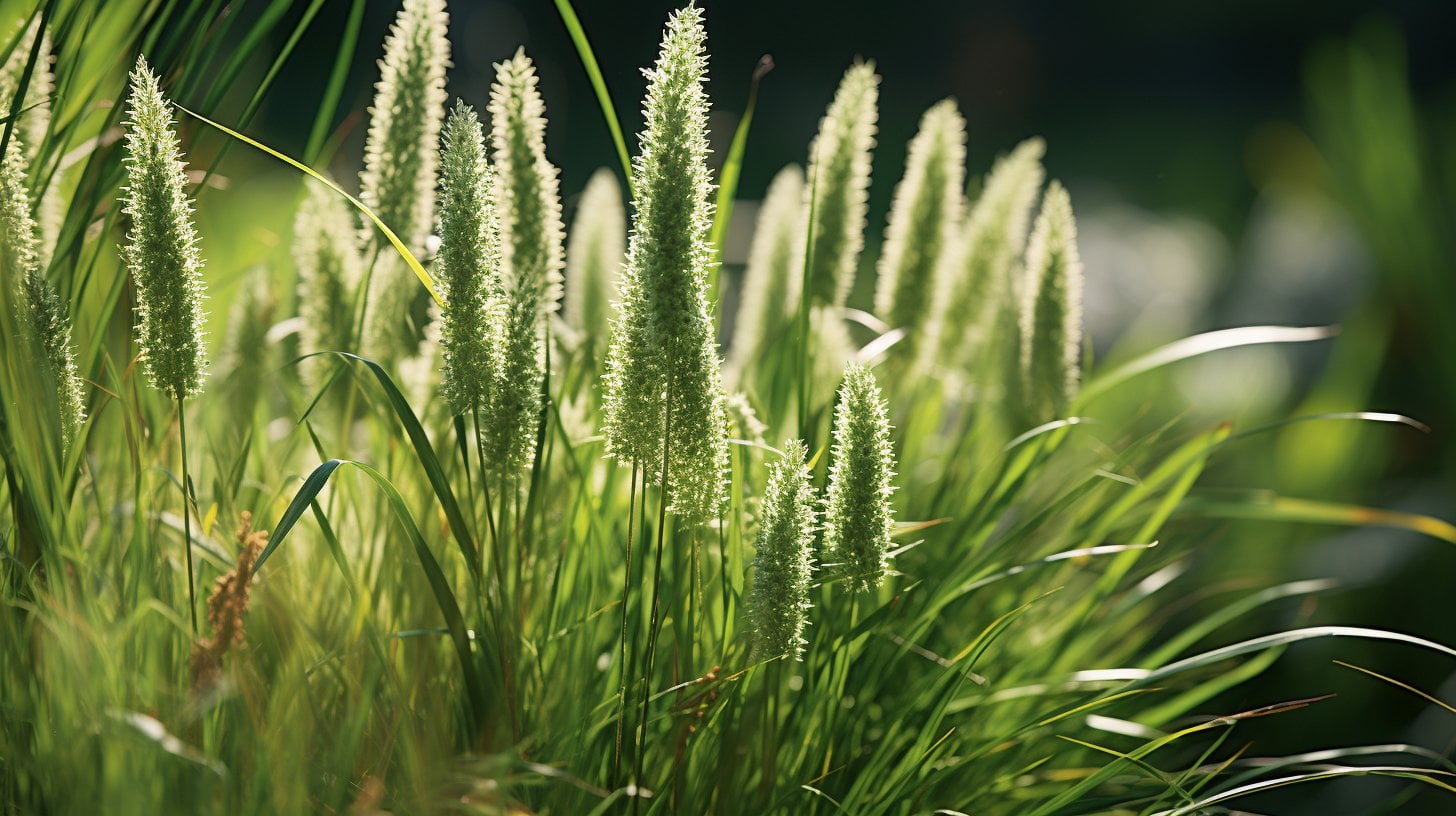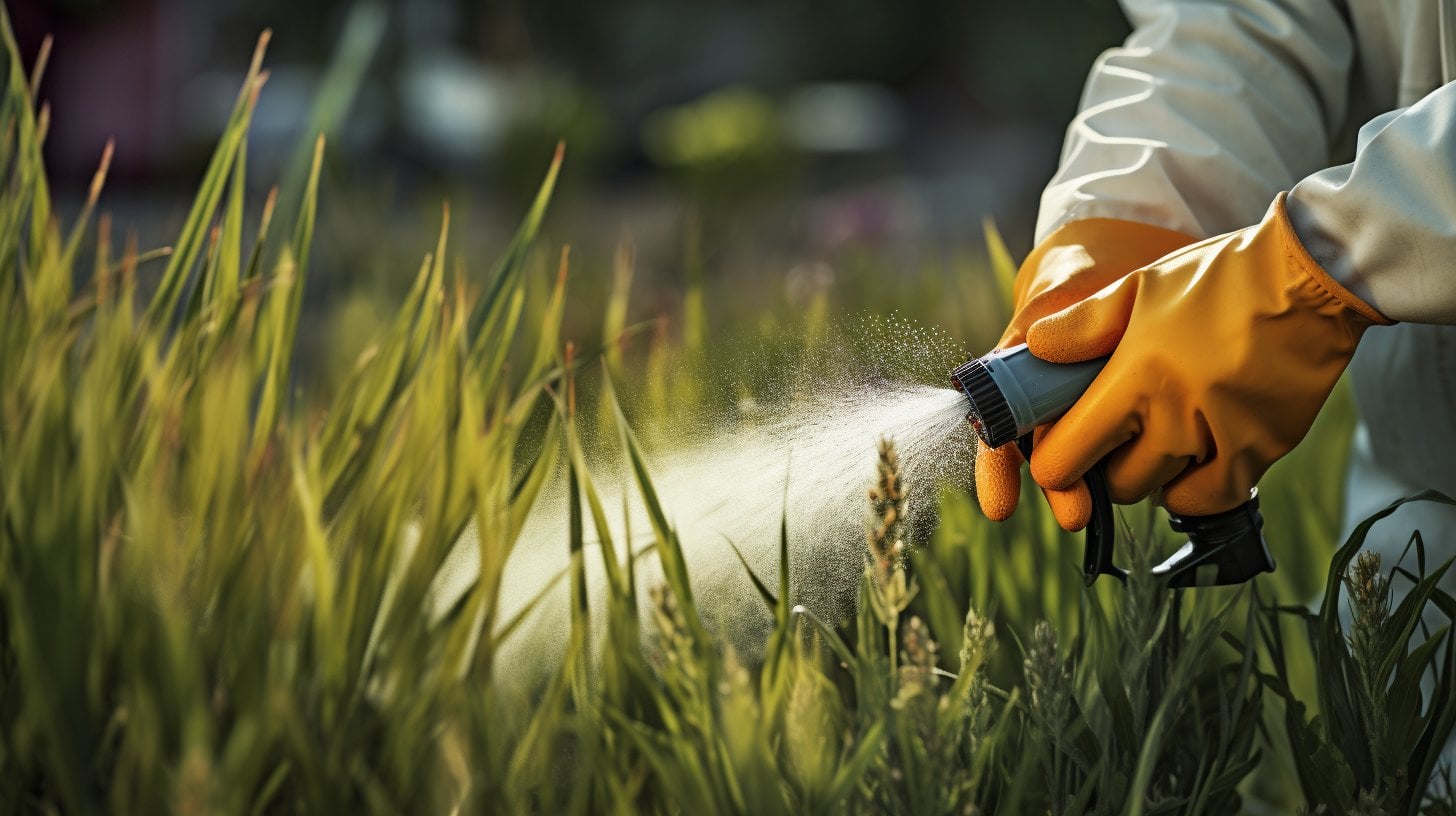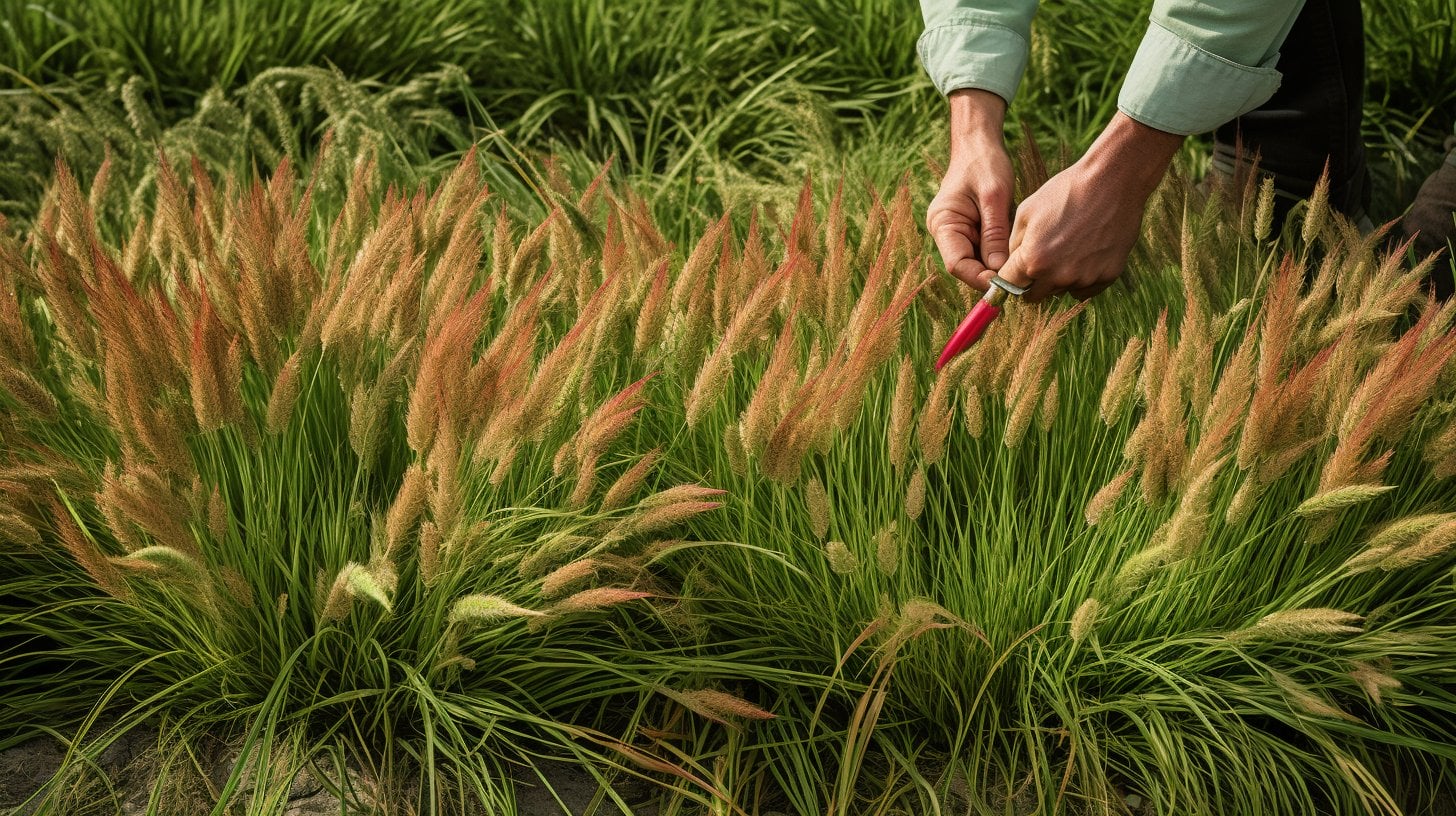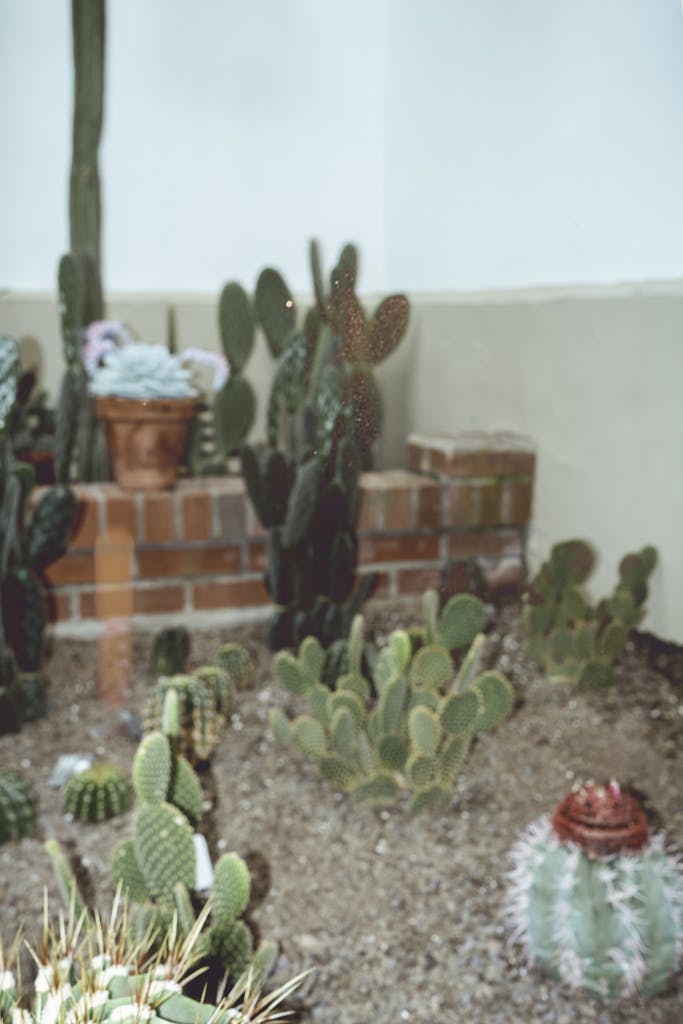How To Get Rid Of Foxtails Without Killing Grass: Foxtail Weed Removal
I’m sure you can relate to the frustration that comes with dealing with foxtails and Downy Brome that invade our yards. Not only do these plants take away the beauty of our lawn, but they also pose a risk to our cherished pets. But how can one possibly eliminate these weeds without causing harm to the grass? I’ve personally grappled with this conundrum. Now, I am prepared to share with you my effective and proven tactics.
We’ll cover everything from manual removal to eco-friendly solutions and selective herbicides.
Let’s reclaim our beautiful, foxtail-free lawns together, shall we?
Key Takeaways
- They can be identified by their unique seed head resembling a fox’s tail, rough-edged leaves, clusters, and a different shade of green than most grass types.
- They are often mistaken for regular grass, but their texture and color change in the lawn, and they have spiky seed heads that stick to anything.
- Manual removal methods using hand pullers, garden hoes, and proper technique are essential for foxtail control.
- Natural solutions like vinegar, salt, and corn gluten meal can be used as non-toxic homemade weed killers, and soil solarization can also effectively kill foxtail weeds.
First Things First – Identifying Foxtail Grass in Your Lawn

Before we tackle the problem of foxtails, we must be sure that’s what we’re dealing with. Let’s start by taking a closer look at the unique characteristics of this pesky weed so you’ll be able to distinguish it from other types of grass that may look similar.
After that, we’ll discuss how to spot the early signs of a foxtail infestation in your lawn.
Recognizing the Unique Characteristics of Foxtail Weed
I’ve got to tell you that a few distinct characteristics can help you identify it in your lawn.
1. First, note the unique seed head. The foxtail plant has a spikelet that resembles a fox’s tail, hence the name.
2. Second, the plant’s leaves are flat with rough edges, unlike other grasses in your lawn.
3. Finally, the growth pattern. It grows in clusters, making them stand out from your regular grass.
Awareness of its unique characteristics is critical for foxtail weed control. If you can accurately identify foxtail, you’re one step closer to managing this pesky weed without harming your beautiful lawn. Mastery in weed identification is key, after all.
Distinguishing Foxtail from Similar-Looking Grass Types
So, you’ve got your eye on a suspicious-looking grassy invader. Still, you’re unsure if it’s foxtail or a similar grass type. Distinguishing foxtail from similar-looking grass types can be tricky, especially if you’re not familiar with the species of foxtail.
First, look at the color. Green foxtail blades are a dead giveaway. They’re a different shade of green than most.
Next, check for hair. Giant Downy Brome has hairy blades, which isn’t common in other grass species.
Spotting Early Signs of a Foxtail Infestation
Although I’m keen on maintaining a lush, green lawn, I must immediately spot the early signs of a foxtail infestation to prevent further spread. Here’s what I’ve learned:
1. Foxtail weed in your lawn is often mistaken for regular grass. It’s a sneaky invader, making early detection critical.
2. Foxtail growth starts silently, but once I notice a change in the texture and color of my lawn, it’s time to act.
3. Foxtail seed heads are the most revealing sign. They’re spiky and can stick to almost anything, making them a nightmare to control.
To prevent foxtail grass from taking over, I need to stay proactive, regularly inspect my lawn, and deal with any signs of infestation immediately.
Implementing Manual Removal Methods – Yielding Instant Results without Killing Grass

Let’s discuss how to manually remove foxtails without harming your grass.
We will discuss the tools you’ll need, the best timing and preparation for weeding, and the safest and most effective techniques.
This approach can give you immediate results, so let’s get started.
Essential Tools for a Hassle-Free and Effective Manual Weeding
I’ve rounded up a list of essential tools to help you carry out manual weeding effectively, removing foxtails without harming your grass. Here they are:
1. Hand Puller: This tool is your best friend regarding weed control. It’ll help you remove foxtail precisely, ensuring your lawn’s safety.
2. Garden Hoe: An essential tool for hassle-free and effective manual weeding. It’ll help you eliminate Downy Brome, which is too stubborn for the hand puller.
3. Garden Gloves: These will protect your hands during the process, making your lawn care experience safer and more comfortable.
With these tools, you can preserve your beautiful lawn while eliminating those pesky Downy Brome!
Understanding the Best Time to Weed and Pre-Weeding Lawn Preparation
My gardener’s instinct tells me that understanding the best time to weed is crucial, and pre-weeding lawn preparation can make manual foxtail removal easier and more efficient. It’s best to weed when the soil is moist to eliminate foxtails without killing grass. It allows easier extraction of the root system. Here’s a quick guide:
| Time to Weed | Lawn Preparation | Result |
| Early morning | Water the lawn | Easier weeding |
| After rain | Clear debris | Efficient foxtail removal |
| Not in the midday sun | Mow grass to a proper height | Protect grassroots |
| Weekly routine | Keep tools clean | Maintain lawn health |
Employing Safe and Effective Techniques for Manual Foxtail Removal
In this section, I will show you how to employ safe and effective techniques for manual foxtail removal that will yield instant results without killing your grass.
1. Hand-pulling: A classic but efficient way to eliminate foxtail. It’s labor-intensive, but it’s a surefire way for foxtail control if done correctly and consistently.
2. Weeding Tools: Use a weeding fork or a similar hand tool. It’ll help you remove the foxtail without harming your lawn. It’s especially useful for larger infestations.
3. Post-Removal Care: After manual foxtail removal, don’t forget to water and fertilize your lawn to help it recover.
Keep in mind that these techniques won’t just kill foxtail; they’ll help maintain a healthy, vibrant lawn. Mastery lies in persistence and proper technique.
Your Guide to Natural Solutions – Eco-friendly Methods to Kill Foxtail Weeds

Now, let’s discuss some natural, eco-friendly ways to eliminate foxtail.
We’ll look at how to make non-toxic homemade weed killers, use the sun’s power for soil solarization, and even use beneficial microorganisms to combat these pesky plants.
I’m excited to share these green strategies with you – they’re effective and kind to our environment.
Exploring Non-Toxic Homemade Weed Killers
Why don’t we explore some non-toxic homemade weed killers that can effectively get rid of foxtail without harming your grass?
1. Vinegar: This common household item can kill foxtail by disrupting its pH balance. Just be careful not to overdo it on your lawn.
2. Salt: Salt can prevent foxtail growth, but use it sparingly, as it can also harm your grass if used excessively.
3. Corn Gluten Meal: This natural pre-emergent herbicide prevents foxtail and other weeds from germinating.
Harnessing the Power of Soil Solarization
I’m about to introduce you to soil solarization. This eco-friendly method uses the sun’s heat to kill foxtail weeds and won’t harm your grass in the process.
Essentially, this process involves covering your lawn with clear plastic during the hottest months. The sun’s rays heat the soil to temperatures high enough to kill foxtails. Remember, foxtail is a weed, but soil solarization allows you to control foxtail grass without chemicals, effectively eradicating it from your lawn.
To get rid of foxtail grass, you’ll need to keep the plastic in place for 4-6 weeks. Once done, you’ll not only kill foxtails but also other weed seeds and harmful organisms.
Soil solarization, thus, provides a natural solution to your foxtail problem.
Introducing Probiotics: The Role of Beneficial Microorganisms in Combatting Foxtails
Often, I’ve found that introducing probiotics into the soil is an effective, natural way to combat foxtails, and it’s a method that doesn’t harm the surrounding grass. This eco-friendly solution uses beneficial microorganisms to tackle your foxtail problem without the need for harmful chemicals.
Here’s how it works:
1. Probiotics boost soil health: They enrich the soil, making it harder for foxtails to thrive.
2. They outcompete foxtails: Beneficial microorganisms can outgrow and crowd out foxtails.
3. They break down foxtails: Some microorganisms can decompose foxtails, helping you get rid of them.
Using Selective Herbicides – Chemical Warfare against Foxtails

Let’s move on to chemical solutions for our foxtail problem – specifically, selective herbicides.
These can be a great tool in our arsenal, and I’ll explain how they work and suggest some top-rated options.
Of course, we’ll also touch on some important considerations when using these chemical treatments.
Understanding How Selective Herbicides Work
Starting on this journey, I will explain how selective herbicides work, effectively acting as chemical warfare against foxtails without harming your grass.
1. Selective herbicides are designed to specifically target and eliminate foxtail grass. They can do this without damaging your lawn because they only affect plants with certain biological characteristics – such as foxtail weed.
2. The best way to get rid of these pests is by using a targeted approach. Remember, a robust lawn is your best defense.
3. To deal with foxtail weed, you must understand how selective herbicides work. They disrupt the growth patterns of the weed, causing it to die off while leaving your grass unscathed.
Master the art of using these herbicides; you’ll reclaim your beautiful lawn in no time.
Top-Rated and Effective Foxtail-Targeted Herbicides
While I’ve explained how selective herbicides work, now I’ll delve into some top-rated and effective foxtail-targeted herbicides that you can consider for your lawn.
Foxtail-targeted herbicides, like Tenacity and Quinclorac, are proven to eliminate foxtails without harming your grass. They’re designed to specifically target the chemical makeup of foxtail in lawns, negating the problems with foxtail that many homeowners face.
It’s crucial to coat the foxtail for best results and remember, timing is key. Apply these herbicides in the early spring when foxtails are still young and easier to kill.
These herbicides are a powerful tool in your battle against Downy Brome, offering a solution that maintains the health and beauty of your lawn.
Key Considerations When Applying Chemical Treatments
In using selective herbicides for chemical warfare against foxtails, I’m not only targeting the invasive weed but also taking steps to ensure the safety and health of my lawn. Removing it without harming the grass involves key considerations when applying chemical treatments.
1. The herbicide must be suitable for yellow and giant foxtails, the most common species.
2. The herbicide should evenly coat the foxtail, ensuring maximum absorption and efficacy.
3. A good lawn maintenance routine is crucial to prevent foxtail regrowth.
Prevention is Better than Cure – Keeping Foxtail Grass At Bay

Now, let’s switch gears and talk about prevention.
I firmly believe that a strong offense is the best defense regarding foxtail control. You can stop these pesky weeds by maintaining a robust lawn, regularly monitoring your yard, and making smart landscaping choices before they even start.
Keeping a Lush, Healthy Lawn to Discourage Foxtail Sprout
Before we delve into how to eradicate foxtails, it’s essential to understand that maintaining a lush, healthy lawn can be a significant deterrent for these pesky weeds. A good lawn maintenance routine is key to keeping foxtail sprouts at bay.
1. Regular Mowing: Keeping your grass at the right height encourages a lush lawn, which doesn’t give foxtails a chance to thrive.
2. Proper Watering: A healthy lawn needs adequate water. Over-watering, however, can encourage foxtail sprout.
3. Fertilization and Aeration: Regular fertilization feeds your lawn, making it robust enough to fend off invaders. Aeration helps roots grow deeply, creating a stronger, more vigorous lawn.
Regular Monitoring and Maintenance: The Key to a Foxtail-Free Yard
Keeping a close eye on your yard and performing regular maintenance is crucial to prevent foxtails, and I can’t stress enough how important this routine is. Regular monitoring and maintenance: Your golden ticket is the key to a foxtail-free yard. A healthy lawn is your best weapon against these pests.
To help you, I’ve prepared a lawn maintenance routine that ensures a foxtail-free yard. Here’s a quick reference table:
| WEEKLY ROUTINE | DESCRIPTION |
| Mowing | Maintain the grass at an optimal height |
| Watering | Hydrate the lawn deeply but infrequently |
| Weeding | Remove any signs of foxtail quickly |
| Fertilizing | Maintain the soil’s nutrition balance |
| Aerating | Ensure the soil isn’t too compact |
Making Informed Landscaping Choices to Prevent Foxtail Invasion
While I firmly believe in the power of regular yard maintenance, I’ve also found that making informed landscaping choices can help keep foxtail grass at bay. After all, foxtail is grass that thrives in the same conditions as your lawn.
The key to a healthy lawn is to prevent weeds like foxtail from ever taking root. Here’s my three-step approach:
1. Choose turfgrass varieties that are competitive against foxtail for best results.
2. Plant densely to leave no room for foxtail to invade.
3. Regularly fertilize and water to maintain the vigor of your lawn.
Dive deeper into your garden’s intricacies: did you know some beautiful flowers that look like weeds? Discover which ones!
Frequently Asked Questions
What Other Plants Can Be Mistaken for Foxtail Grass?
In my experience, plants like crabgrass, brome, and quackgrass can often be mistaken for foxtail grass due to their similar appearance. It’s crucial to correctly identify them for effective weed management.
How Do Foxtail Weeds Affect the Overall Health of My Lawn?
Foxtail weeds can seriously damage my lawn’s health. They’re invasive, outcompeting my grass for nutrients, light, and space. Plus, their sharp seed heads can puncture the skin, posing a risk to pets and children.
Can Foxtail Weeds Pose a Danger to Pets and Children?
They can be dangerous to both pets and children. They’re sharp and can get embedded in fur or skin, leading to pain or infection. It’s crucial to keep your yard free of these pesky weeds.
How Long Does It Take for Foxtail Weeds to Fully Grow and Spread?
They generally take about 8-10 weeks to fully mature and spread. However, it’s crucial to note that their growth rate can differ based on environmental conditions like soil, water, and sunlight availability.
Are There Any Alternative Methods for Foxtail Grass Removal Not Mentioned in the Article?
Yes, there are alternative methods not mentioned. I’ve found that using a dethatching rake on a cool day can be effective. Crowding out foxtails by planting a competitive ground cover is also possible.
Conclusion
So there you have it, folks. They can be removed with a little patience and elbow grease without sacrificing your lush lawn.
From manual labor to eco-friendly methods and even selective herbicides, you have the tools to wage war on these pesky weeds.
Remember, preventing their growth in the first place is your best defense. So stand tall, keep your lawn healthy, and those foxtails won’t stand a chance.







